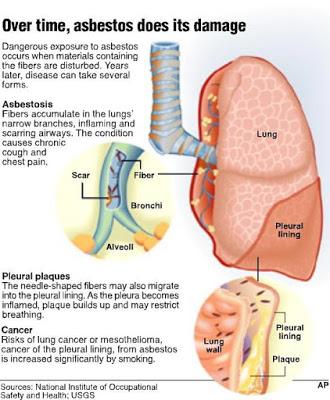What is mesothelioma?

Mesothelioma is a type of cancer that starts from mesothelial cells.These cells line the outer surface of most of the body’s internal organs, forming a protective membrane called the mesothelium.
Some mesotheliomas form a mass (tumour), while others grow along the mesothelium and form a thick covering. In later stages, mesothelioma may spread (metastasise) to other parts of the body
Pleural mesothelioma:
The mesothelium that covers the lungs is called the pleura.Mesothelioma that develops in the pleura is known as malignant pleural mesothelioma or, simply, pleural mesothelioma. It accounts for more than 90% of all mesotheliomas.
Although pleural mesothelioma involves the lining of the lungs,it is not lung cancer and is diagnosed and treated differently.
The pleura:
There are two layers in the pleura. The inner layer lines the surface of the lungs and is called the visceral pleura. The outer layer lines the chest wall and the diaphragm, and is called the parietal pleura.
Between the two layers is the pleural cavity (also called the pleural space), which normally contains a small amount of fluid. This fluid allows the two layers of pleura to slide over each other so the lungs move smoothly against the chest wall when you breathe. When mesothelioma develops in the pleura, the delicate layers of the pleura thicken and may press on the lung, preventing it
from expanding when breathing in (inhaling). Excess fluid often collects between the two layers – this is called a pleural effusion.
Peritoneal mesothelioma
The mesothelium that lines the walls and organs of the abdomen and pelvis is called the peritoneum. Mesothelioma that develops in the peritoneum is known as malignant peritoneal mesothelioma
or, simply, peritoneal mesothelioma. It accounts for less than 10% of all mesothelioma.
The peritoneum
The peritoneum has two layers. The inner layer lines the surface of organs such as the bowel, liver and ovaries and is called the visceral peritoneum. The outer layer lines the walls of the abdomen and pelvis, and is called the parietal peritoneum.
Between the two layers is the peritoneal cavity, which normally contains a small amount of fluid. This fluid allows the two layers to slide over each other as you move around. In people with peritoneal mesothelioma, excess fluid often collects between the two layers – this is known as ascites or peritoneal effusion.
Advertise on APSense
This advertising space is available.
Post Your Ad Here
Post Your Ad Here
Comments